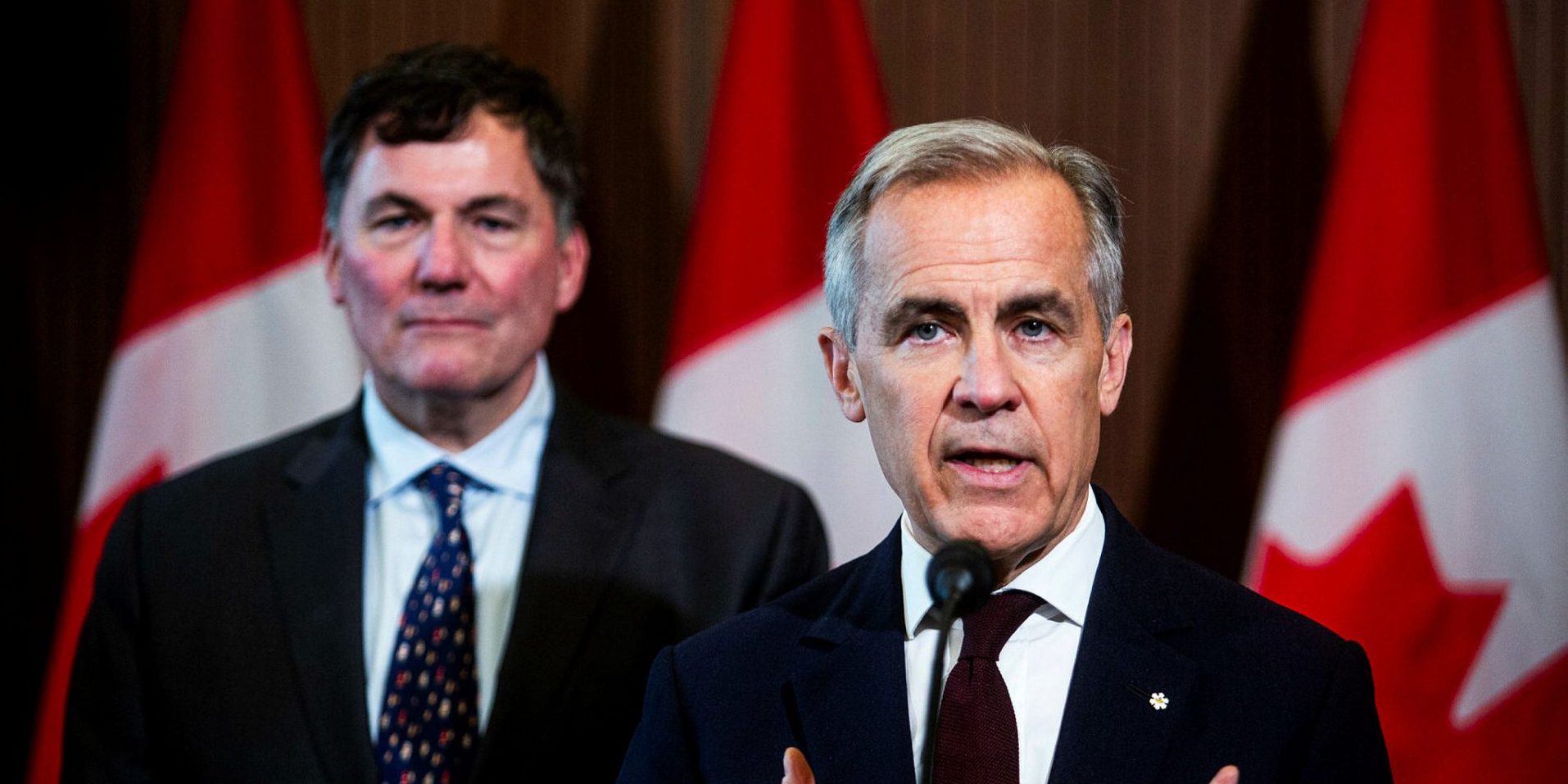Bill to fast-track major projects could boost GDP, but raises environmental concerns

Economists argue that recently-tabled legislation to remove internal trade barriers in Canada and expedite major projects has significant potential to boost the economy, but critics are also wary of what projects will end up getting those speedier approvals.
The good news is that if the federal government is successful in unlocking this country’s interprovincial barriers, doing so will “generate some considerable … gains” in gross domestic product, said Paul Smetanin, president and CEO of the Canadian Centre for Economic Analysis (CANCEA).
“In terms of Bill C-5, part of my concern would be major project accelerations,” he continued. “While we might get excited about that, that assumes that the major projects in and of themselves are actually worth doing, because the federal government has not had a good track record … in understanding and properly evaluating major infrastructure projects.”
Bill C-5, or the “One Canadian Economy Act,” was tabled by Canada-United States Trade and Intergovernmental Affairs Minister Dominic LeBlanc (Beauséjour, N.B.) on June 6. The bill would enact a Free Trade and Labour Mobility in Canada Act intended to remove interprovincial trade barriers and to ease labour mobility. The bill would also enact a Building Canada Act, intended to streamline the federal regulatory processes for major projects. Prime Minister Mark Carney (Nepean, Ont.) has said the bill is a top priority for his government, and “will do everything to get it passed before the summer.”

In terms of free trade and labour mobility, the bill seeks to harmonize federal regulations with provincial and territorial standards. According to the bill, any goods produced, used, or distributed in accordance with a provincial or territorial requirement would be considered to have met any comparable federal provision, so long as the requirements respect the same aspect or element of the item; are intended to achieve a similar objective; and meet any conditions set out in the regulations. Likewise, any service meeting provincial or territorial standards would be treated as meeting federal standards if they meet those equivalent conditions.
A report from the Macdonald-Laurier Institute, released in September 2022, estimated that removing interprovincial trade barriers could grow this country’s economy by $200-billion annually through the elimination of regulatory mismatches between provinces.
Smetanin told The Hill Times that he likes the intention behind Bill C-5.

“It is exciting that there is an intention here to try and create some harmony, and to try and create, internally, some mobility of our intellectual and capital resources because as a country … we can’t keep acting like each province is a country on its own because we’re not getting the economies of scale that’s required to run a country of 40.1 million people,” he said.
In regard to major project development, Bill C-5 aims to accelerate the regulatory process for infrastructure projects that the federal government designates as being in the “national interest.”
The bill would empower the governor-in-council to decide if an infrastructure project is in the national interest by considering factors such as whether a project would strengthen Canadian autonomy, resilience and security; provide economic or other benefits to the country; have a high likelihood of successful execution; advance the interests of Indigenous Peoples; and contribute to clean growth and to meeting Canada’s objectives with respect to climate change.
Smetanin described Canada as a very politicized country where “infrastructure is treated like a political football.”
What projects would be considered of “national interest” is ambiguous, according to Smetanin.
“The thing about major project acceleration, that’s on the assumption that these major projects have been properly evaluated,” he said. “If things are hard to get off the ground from an infrastructure point of view—and the infrastructure is not worth doing—well, then, the friction or the barriers to getting the project going is a good thing because it will save us money in the long run and hopefully give rise to better planning, too.”
Smetanin described Canada as displaying “volatility” when it comes to infrastructure decision-making.
A CANCEA report released on Jan. 16, 2022, stated that a “volatility of investment levels,” or changes in said levels over the short term is potentially the nation’s biggest barrier to export success, and that infrastructure investments should be part of a strategic long-term plan.
Daniel Schwanen, an economist and senior vice-president of the C.D. Howe Institute, described Bill C-5’s project acceleration component as a good start, “but let’s see what projects are actually listed that meet all those criteria.”
He argued the bill is clear about the government’s intention to streamline the approvals of certain projects, without removing or changing project approval criteria.

“The environmental criteria is there. The Indigenous consultation criteria is there,” he said. “It’s not about cutting corners. It’s about … having an efficient process [with] less overlap.”
Energy Minister Tim Hodgson (Markham-Thornhill, Ont.), said on May 23 at an event in Calgary that the government would establish a Major Federal Projects Office that would reduce approval schedules for nationally significant projects from five years to two.
A C.D. Howe Institute report released on June 18, 2024, argued large infrastructure projects in Canada—such as mines, electricity generation, ports and oil or natural gas pipelines—often involve multiple levels of jurisdiction and are slow to gain government approval.
“Perhaps less obvious are costs driven by time or uncertainty. The longer the approval process takes, the higher the profitability bar must be raised to offset the costs incurred by paying staff prior to receiving revenue and forgoing investments should funds be needed to be kept liquid. Further, if a proponent considering an investment is unsure whether a project will receive approval at all, it is less likely to even start the approval process,” reads the report.
In regard to Bill C-5, Schwanen said that “on its face and in the intention, it’s really good news,” but added that the proof would be in the pudding.
“The processes are still in place, but this will accelerate them and make sure that the answer that project promoters get about whether it meets the criteria or not, instead of taking five years … will take two years, and that will encourage investors to actually submit ideas and submit projects. It doesn’t mean that they get an automatic approval. I think, far from it,” he said.
“Other countries are doing a lot better than us, and we’re not talking countries that just deregulate willy-nilly. It’s just that they have just a more streamlined process so that investors that … want to put money in major projects get an answer more quickly.”
Pedro Antunes, chief economist at the Conference Board of Canada, said the bill is possibly a good thing, but time will tell if it’s a success.

“I’m holding back a little bit on a lot of glee around the interprovincial trade barriers and labour mobility. I think there’s a lot that has to come from the provinces on that front. I’m not convinced yet that this is going to make major changes there,” he said.
“But certainly on the [Building Canada Act], I think there’s a lot to be said there that we need to do better on that, for sure, and hopefully this pushes us in the right direction.”
Since Bill C-5 was tabled, some critics with environmental concerns have raised the alarm about the expedited project approval plans outlined in the legislation.
Ecojustice referred to the bill as a threat to democracy and the environment in a June 6 press release, and argued that the feds would risk “silencing communities, sidelining science, and undermining the law,” by fast-tracking national interest projects.
“The newly tabled Bill C-5 will give the government extraordinary powers once it has designated a project as in the ‘national interest’, including the ability to authorize it despite potential negative environmental impacts—on species, ecosystems, and communities—that would not otherwise be permitted,” said Charlie Hatt, Ecojustice’s climate program director, in the press release.
“On top of the compressed process set out in Bill C-5, it also gives the governor-in-council the ability to fully exempt a national interest project from the application of any federal law. We’ve never seen a federal law that gives this much unchecked executive power before in the history of modern Canadian environmental law.”
Carney said on June 6 that his government will not impose a project on a province that doesn’t want it, as reported by Radio Canada International.
Green Party Leader Elizabeth May (Saanich-Gulf Islands, B.C.), described the bill as “a blank cheque for cabinet to push through projects without proper oversight,” in a statement on June 6.
“The bill also sidelines Indigenous rights. Even where Indigenous communities’ constitutionally protected rights may be harmed, the bill requires only that they ‘must be consulted’—while giving full veto power to the Canadian Energy Regulator over pipeline approvals,” reads the statement.
“That is an appalling double standard,” May added.
Keith Brooks, program director for Environmental Defence, told The Hill Times the bill is potentially very problematic from an environmental perspective.

“This bill gives the government powers to override pretty much every piece of federal environmental legislation. That seems very risky, because all that legislation has been put in place for a reason, and just ignoring it, I think, opens up potential for serious harm,” said Brooks.
“I think the real risk is that it’s politicized decision-making and not giving us a robust framework to understand how the assessment of national interest will be done, and for people to weigh in on whether we agree that these projects are of the national interest and should be expedited.”
Brooks argued that there are many possible major projects that could be worth doing, but it should be clear if those projects advance Canada’s economic interest, advance a clean economy, and also include high levels of support from Indigenous Peoples.
“We’d love to see good projects move forward more quickly. I just think we really need to make sure that we’ve got really good guardrails in place, and we have a robust conversation about what nation-building is,” he said. “Why don’t we expedite getting clean drinking water and housing for all Indigenous and First Nation communities? That doesn’t seem like a contentious thing to me.
“I think we could get behind the notion of high-speed rail … intercity rail between Edmonton and Calgary, and we can get behind the notion of a clean electricity grid as well,” Brooks added.
The Assembly of First Nations (AFN) will hold a virtual forum for chiefs from across the country on June 16 to discuss Bill C-5, said AFN National Chief Cindy Woodhouse Nepinak in a statement released on June 10.
She said First Nations want to open new economic development opportunities and address economic threats, but “we also have rights that cannot be ignored.”
“Unfortunately, the government provided First Nations only seven days to respond to an outline of the bill and did not provide the full text (a consultative draft) in advance. Compounding this, the parliamentary process is not well-suited to the depth of consultation such complex legal matters require,” said Woodhouse Nepinak in the statement.
“An enormous responsibility now rests on the shoulders of each Member of the House of Commons and the Senate to uphold the Honour of the Crown and to protect First Nations rights during their consideration of this bill. The AFN expects the House and Senate Committees to do everything within their power to accommodate First Nations and to meet their concerns.”
Canada Natural Resources Statistics (2023)
- Energy resources accounted for more than half (61 per cent) of the value of all natural resource assets in 2023, followed by mineral resources (24 per cent) and timber (16 per cent). These shares of resources were similar to those of 2022.
- Energy resources totalled $1.038-billion in 2023, a decrease of $575-billion from 2022, as lower energy prices offset an increase in oil production.
- The value of crude bitumen totalled $608-billion in 2023, down by $248-billion from 2022. Despite this decrease, crude bitumen remained Canada’s top natural wealth contributor in 2023, making up more than one-third of the total natural resource value.
- Crude oil and natural gas contributed to 13 per cent of the total natural resource wealth in 2023, which is less than the 22 per cent of 2022. Conversely, bituminous coal increased in contribution to the total resource value in 2023 (12 per cent) from 2022 (eight per cent).
- Though mineral prices remained high in 2023, they overall trended downward compared with 2022. In 2023, mineral resources decreased in value by more than one-quarter (28 per cent) to $406-billion. Potash (35 per cent) was the top contributor to the mineral resource value, followed by iron (30 per cent), gold (13 per cent) and nickel-copper (12 per cent). These resources have been the top contributors for the past six years.
- The value of timber assets was $267-billion in 2023, a 29-per-cent decline from the previous year.
Source: Statistics Canada data released on Nov. 20, 2024






 LICENSING
LICENSING PODCAST
PODCAST ALERTS
ALERTS













